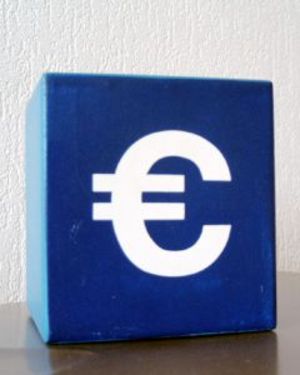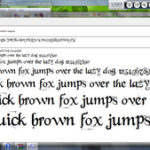The euro is the currency of the European Union countries of Germany, Belgium, Greece, Spain, France, Ireland, Italy, Luxembourg, the Netherlands, Portugal, Austria and Finland. When the euro currency was introduced in 1999 an inadvertent side effect rippled through the graphics community. The euro sign was brand new and fonts didn’t have the euro character in their character set to represent it.
The official abbreviation for the euro currency is EUR and is used as a term in international banking circles just as USD is used for US dollar. The euro sign, €, is the official symbol of the euro and its use is preferred in most contexts. According to the European Commission, the euro sign was inspired by the Greek epsilon pointing back to the cradle of European civilization along with the letter ‘E’, the first letter of Europe. Two parallel lines cross it, indicating stability of the euro.
The European Commission worked with the International Organization for Standardization (ISO) which is responsible for the standardization of glyphs and fonts, character transmission codes, keyboards etc., on implementing the euro sign into fonts. .
In 1998, the euro sign was included in Unicode version 2.1 with the name “Euro Sign”. The euro sign in the Unicode character set takes up the code position of U+20AC or decimal 8364. It is also available in updated versions of other Latin character sets.
Microsoft has built in functionality for the euro sign in Windows 2000 and above while Apple’s support is for OS 8.5 and above.
If the euro sign is not available in a particular font, the abbreviation EUR can be used.
To use the euro sign in a document, first check to see if the font in use contains the euro character. Check the date in the font’s properties to see if the font was developed after 1999 when the euro currency was introduced. If the symbol is desired and the font being used lacks the euro sign, there are a few different options for inserting it.
Use the special character utility of the operating system to copy and paste the symbol into a particular document. For example, in Windows, go to the Start button, choose “all programs”, then “accessories”, then “system tools” and finally, “character map”. The trouble with this method is that the special character utility isn’t installed by default on all versions of Windows.
A quicker method is to use the shortcut keys. In Windows, use the shortcut key of ALT + 0128. In Macintosh OS, use ALT + 2 to insert the euro sign.
In MS Office applications, a fast way to insert the euro sign is to click the Symbol option on the insert menu and type in “20AC” in the character code field. 20AC represents the character code from the Unicode character set.
Displaying the euro sign in HTML has caused much confusion. Using “€” in HTML is supposed to display the euro sign as does “€” and �” however the results are inconsistent at best. Entering the HTML codes is supposed to display the euro glyph or EUR but oftentimes a question mark, a strange character or nothing appears. In the early days, many browsers were unable to render the new euro sign.
Another option is to download a newer version of the font. All of Adobe’s OpenType fonts contain the euro sign. In addition, Adobe offers three versions of the euro sign in Type 1 format for free, the Euro Sans, The Euro Mono and the Euro Serif. All of Microsoft’s main TrueType fonts support the euro sign at Unicode position x20AC. Apple fonts such as Chicago, Courier, Gadget, Helvetica, Apple Chancery, Capitals, Geneva, Palatino, Monaco, New York, Hoefler Text, Sand, Skia, Techno, Symbol, Textile and Times were among the first to support the euro sign on Macintosh machines.
The European Commission originally called for the euro sign to always be displayed as a san serif font but in recent years has changed its position on that. In fact, over the course of designing typefaces containing the euro sign, font designers deviated from the original shape and created their own variants. Controversy and complex integration into font families has surrounded the euro sign from day one.
While the euro has been in existence since 1999, font issues continue to crop up because many older fonts are still in use and will continue to be in use for some time.





